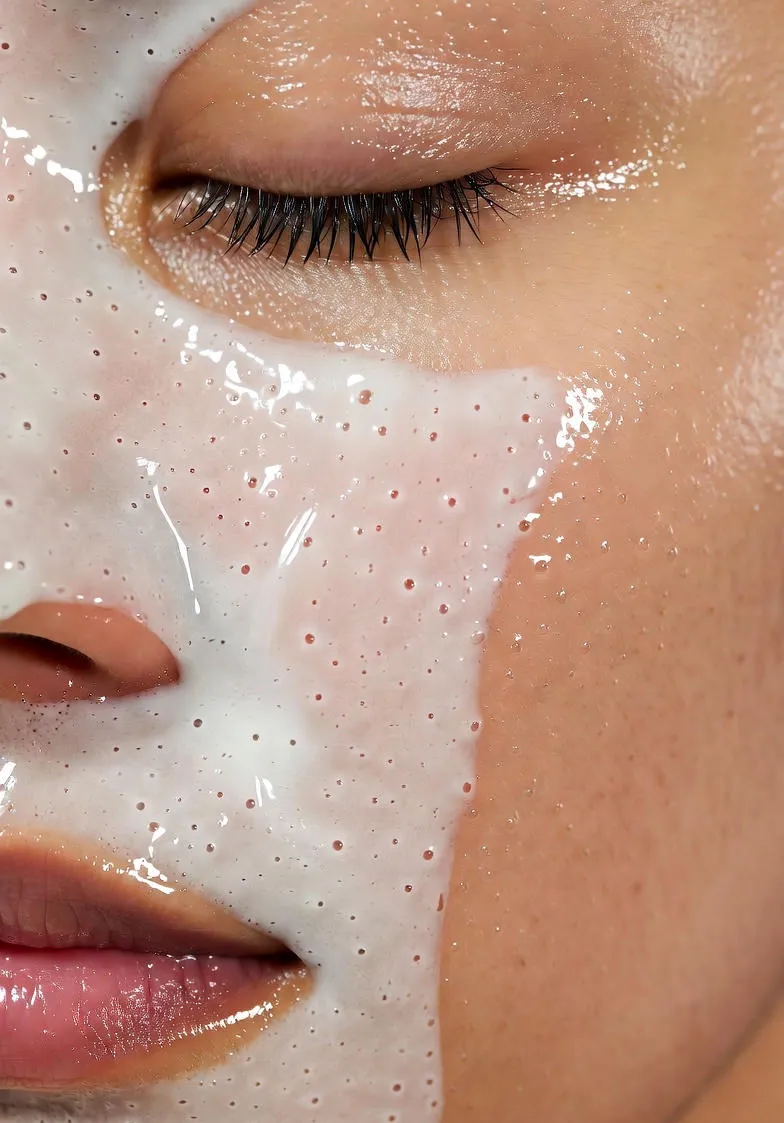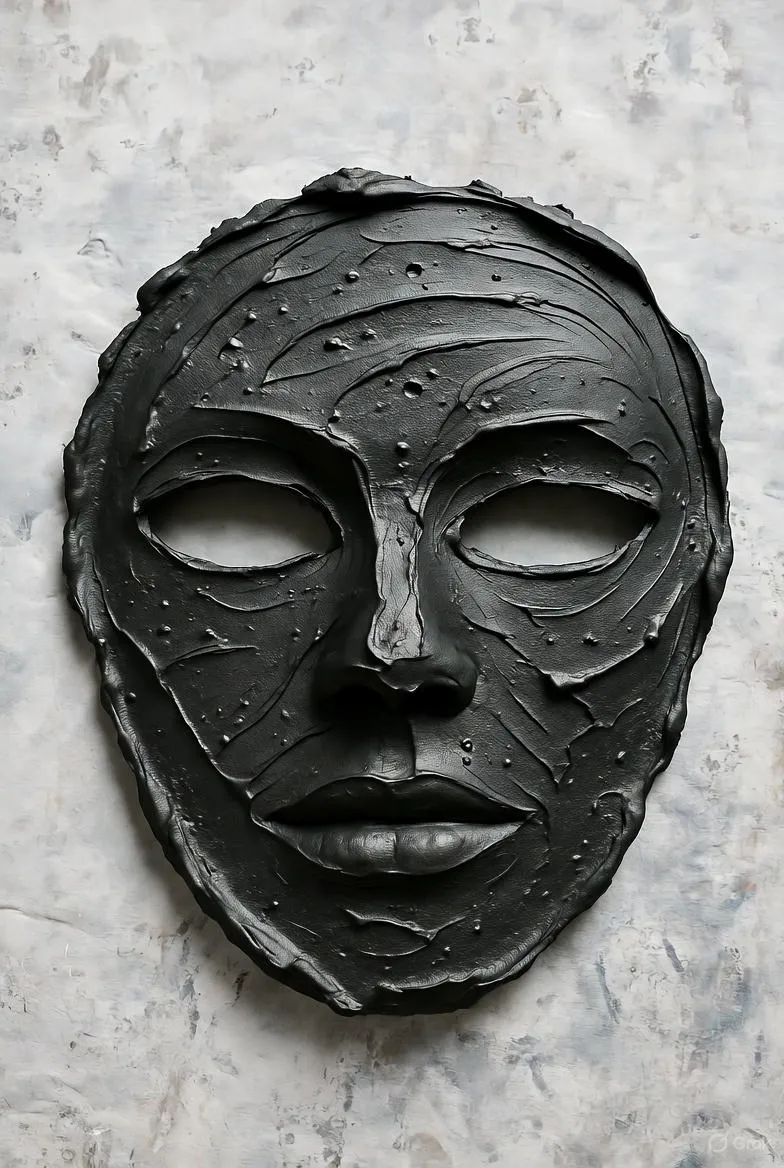Unlocking Silky Smooth Skin: The Ultimate Guide to Peel-Off Face Masks
Discover the transformative power of peel-off face masks for achieving silky smooth skin texture. Explore benefits, DIY recipes, top products, and expert tips in this comprehensive guide.

What Are Peel-Off Face Masks and Why Do They Matter for Smooth Skin?
Peel-off face masks have surged in popularity within the skincare community, and for good reason. These innovative treatments offer a satisfying, hands-on approach to achieving that coveted smooth, radiant complexion. Unlike traditional wash-off masks that require rinsing, peel-off masks form a flexible, gel-like film on the skin that you can literally peel away, taking impurities, dead skin cells, and excess oil with it. This mechanical exfoliation process is particularly effective for smoothing texture, revealing fresher, softer skin underneath.
The magic lies in their ability to gently yet thoroughly remove the buildup that dulls our skin's surface. Over time, environmental pollutants, makeup residues, and natural skin shedding can create a rough, uneven texture. Peel-off masks address this by clinging to the top layer of the epidermis, lifting away debris without the need for harsh scrubs that can irritate sensitive skin. For those seeking a smoother texture, these masks provide an accessible, at-home spa experience that delivers visible results with minimal effort.
The Science Behind Peel-Off Masks and Skin Smoothing
To understand why peel-off masks excel at improving skin texture, it's essential to delve into their formulation. Most peel-off masks are based on polymers like polyvinyl alcohol (PVA) or seaweed extracts, which create that peelable film. As the mask dries, it contracts slightly, promoting a gentle pulling action that dislodges clogged pores and loosens dead skin cells. This process enhances cell turnover, a key factor in maintaining smooth skin.
Research in dermatology supports this: studies show that mechanical exfoliation, when done correctly, can increase skin smoothness by up to 20% after consistent use. The masks often incorporate active ingredients such as alpha hydroxy acids (AHAs) for chemical exfoliation synergy, or humectants like glycerin to hydrate and plump the skin post-peel, preventing any tightness or flakiness. The result? A refined surface that's not just smooth but also more receptive to subsequent skincare products, allowing serums and moisturizers to penetrate deeper.
Key Ingredients for Optimal Texture Improvement
- Charcoal and Clay: These absorbents draw out toxins, reducing pore visibility for a smoother appearance.
- Fruit Enzymes (Papaya, Pineapple): Natural exfoliants that break down proteins in dead skin, promoting even texture without abrasion.
- Hyaluronic Acid: Locks in moisture, filling in fine lines and creating a plush, smooth feel.
- Tea Tree Oil: Antimicrobial properties help calm inflammation, indirectly supporting smoother skin by preventing breakouts that cause unevenness.
Incorporating these elements ensures the mask isn't just a one-trick pony but a multifaceted tool for texture transformation.
Benefits of Peel-Off Masks Specifically for Smooth Texture
Beyond the general cleanse, peel-off masks shine in their targeted benefits for skin smoothness. First and foremost, they excel at pore refinement. Enlarged pores can make skin look bumpy and textured; by extracting sebum and debris, these masks minimize their appearance, leading to a more uniform canvas. Users often report a 'glass skin' effect immediately after peeling, where the skin feels velvety and reflects light evenly.
Another standout advantage is their role in hyperpigmentation reduction. Uneven tone contributes to rough texture perceptions; the exfoliating action helps fade dark spots over time, blending the complexion for a smoother visual and tactile experience. For acne-prone skin, these masks prevent future congestion, breaking the cycle of inflammation that leads to scarring and pitting.
Moreover, peel-off masks are gentle on most skin types when chosen wisely. They're particularly beneficial for combination skin, balancing oil in the T-zone while preserving hydration elsewhere. Regular use—twice weekly—can lead to cumulative improvements, with many noticing reduced fine lines and a softer jawline due to enhanced collagen stimulation from the peeling process.
Comparing Peel-Off Masks to Other Exfoliators
| Method | Pros for Smoothness | Cons |
|---|---|---|
| Peel-Off Masks | Gentle, visible removal, hydrating options | Drying if left too long |
| Chemical Peels | Deep penetration, long-term results | Requires professional application, downtime |
| Physical Scrubs | Immediate gratification | Can cause micro-tears, irritation |
As seen, peel-off masks strike a balance, making them ideal for at-home texture maintenance.
How to Use Peel-Off Face Masks for Maximum Smoothness
Application is straightforward, but technique matters for optimal results. Start with a clean, dry face—post-cleanser, no serums yet. Using a spatula or clean fingers, apply a thin, even layer over the face, avoiding the eye area, eyebrows, and hairline to prevent tugging. Let it set for 10-20 minutes until it turns from glossy to matte and edges lift easily.
Peel slowly from the bottom up, like unveiling a gift. Follow with toner to rebalance pH, then your favorite serum and moisturizer to seal in the smoothness. For best texture outcomes, incorporate into your evening routine when skin repairs overnight. Pro tip: Exfoliate with these masks before a big event for that instant glow-up.
- Prep skin: Cleanse thoroughly.
- Apply evenly: Cover targeted areas like cheeks and forehead.
- Dry patiently: Resist poking; full contraction enhances peel.
- Remove gently: Fold and discard; rinse any residue.
- Hydrate: Layer on actives for plumpness.
Tips for Sensitive Skin Users
If you have delicate skin, opt for gel-based formulas over thick ones to minimize pull. Patch test on your inner arm first, and never force a peel— if it sticks, mist with water. These precautions ensure smoothness without compromise.
DIY Peel-Off Mask Recipes for Smooth, Customizable Care
For the DIY enthusiast, crafting your own peel-off mask allows personalization for specific texture needs. These recipes use accessible ingredients, blending science with simplicity.
Charcoal Detox Peel for Oily Texture
Mix 2 tablespoons unflavored gelatin with 1/4 cup activated charcoal powder and 1/2 cup boiling milk. Stir until dissolved, cool slightly, apply, and peel after 15 minutes. The charcoal unclogs, while milk's lactic acid smooths gently.
Green Tea Antioxidant Peel for Even Tone
Brew strong green tea, mix 1 tablespoon with 1 tablespoon PVA glue (non-toxic) and a teaspoon of honey. This antioxidant-rich blend soothes while peeling away dullness for refined texture.
Honey-Lemon Brightening Peel
Combine 1 tablespoon lemon juice, 2 tablespoons honey, and 1 tablespoon gelatin dissolved in warm water. Lemon's vitamin C fades spots, honey hydrates—perfect for bumpy, discolored skin.
These homemade versions are cost-effective and fun, but store in the fridge for up to a week and use fresh batches for potency.
Top Commercial Peel-Off Masks for Achieving Smooth Texture
The market brims with stellar options. Freeman's Charcoal & Blackhead Remover Peel-Off Mask is a bestseller for its pore-deep clean, leaving skin buttery smooth. For luxury, try Peter Thomas Roth's Ice Quench Masks—infused with glacial water for a cooling, de-puffing peel that refines texture exquisitely.
Budget-friendly? L'Oréal's Pure-Clay Detox Mask peels off impurities while clay minerals buff away roughness. And for sensitive souls, The Body Shop's Himalayan Charcoal Peel-Off Mask uses tea tree for calm, smooth results. Each targets texture uniquely, so rotate based on your skin's weekly whims.
Reading Labels: What to Look For
- Fragrance-free for irritation avoidance.
- Non-comedogenic to prevent new clogs.
- Added botanicals like aloe for post-peel soothing.
Selecting wisely amplifies smoothness gains.
Potential Drawbacks and How to Avoid Them
No treatment is flawless; peel-off masks can dry out skin if overused or left on too long, leading to temporary tightness. Those with very dry or eczema-prone skin might find the pull aggravating. Solution: Limit to once weekly and always moisturize liberally after.
Allergies to polymers or extracts are rare but possible—discontinue if redness persists. For best practice, consult a dermatologist if you have active conditions like rosacea.
Integrating Peel-Off Masks into a Holistic Skincare Routine
Smooth texture isn't a solo act; pair peel-offs with daily essentials. Morning: Gentle cleanse, vitamin C serum, SPF. Evening: The mask twice weekly, bookended by hydrating essence and overnight mask. Weekly, add a hydrating sheet mask to counter any dryness.
Long-term, combine with retinol for deeper renewal, but introduce slowly to avoid irritation. Diet and hydration play roles too—omega-rich foods and 8 glasses of water daily bolster skin's natural smoothness from within.
Real User Stories: Transformations in Texture
Anecdotes abound: Sarah, 28, credits weekly charcoal peels for banishing her post-acne bumps, now boasting poreless perfection. Techie Tom, 35, found green tea DIYs smoothed his stress-induced roughness, enhancing his confidence. These tales underscore the masks' transformative power when consistent.
Conclusion: Peel Your Way to Perpetual Smoothness
Peel-off face masks are more than a trend—they're a tactile ticket to smoother, happier skin. By exfoliating effectively yet kindly, they bridge the gap between dull and dazzling. Whether store-bought or homemade, integrate them thoughtfully, and watch your texture evolve. Your smoothest self awaits beneath that peel.


